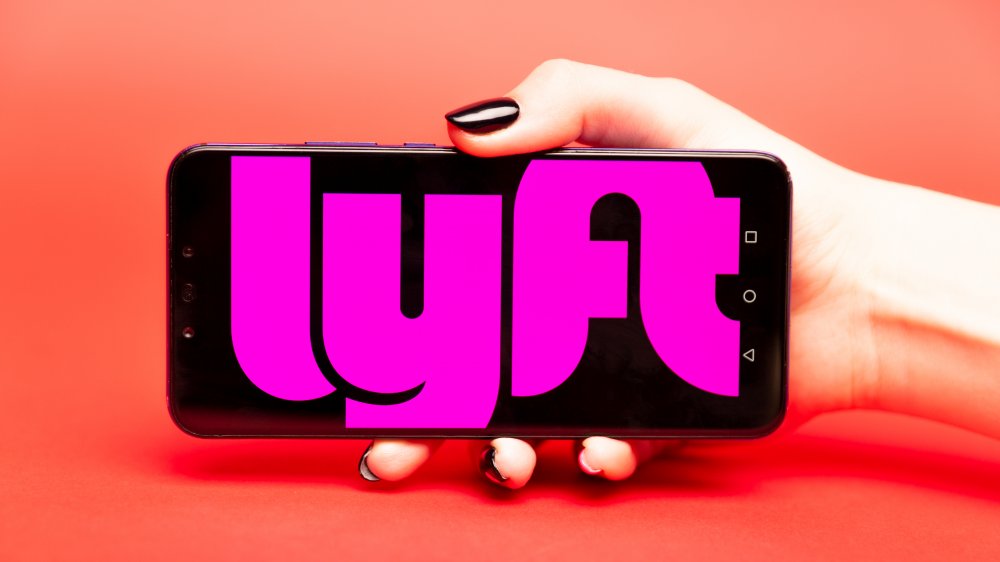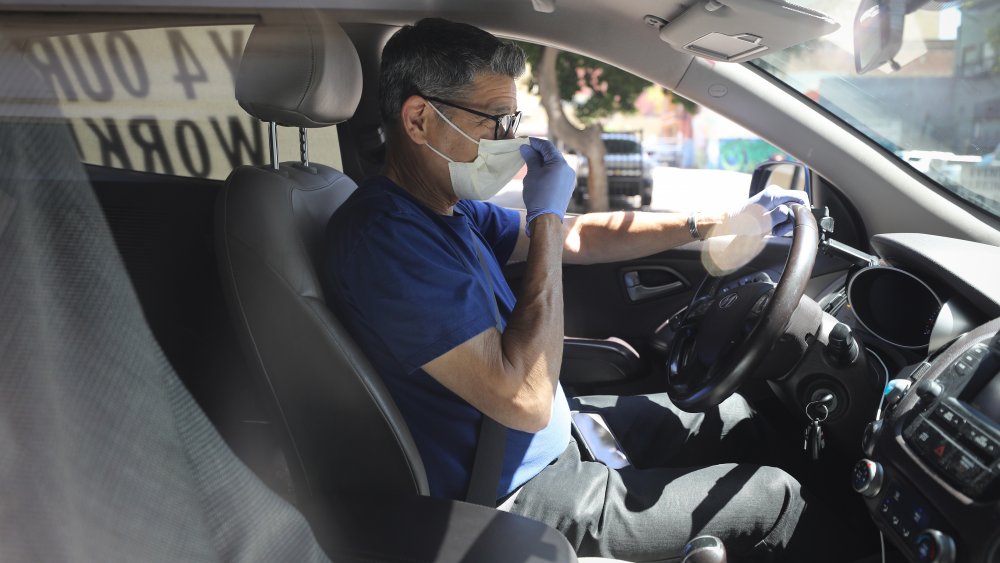Here's How Lyft Will Be Different After The Pandemic
Hailed a Lyft lately? Yeah, didn't think so. Who's got anywhere to go, anyway? The entire transportation industry has taken a huge hit due to the pandemic, and Lyft, of course, is no exception — MarketWatch reports that the company lost $398.1 million during the first quarter of 2020, and as a result of the social distancing-related slowdown in traffic, has had to lay off about 17 percent of their workforce. Even those drivers who got to keep their jobs haven't been doing so well, with Ridester reporting earnings down by 80 percent. Lyft is still hanging in there, however, as sales of stock appear to be soaring — evidently their losses weren't nearly as bad as investors expected them to be.
So don't delete that app just yet! Once you're out and about again, you'll still be able to catch a lift with Lyft. Of course, there will be a few changes in store — some of these may be minor (but necessary) annoyances, but one proposed change could work out in your favor.
What Lyft will be changing in its post-pandemic incarnation
Lyft, like many other businesses, is implementing measures meant to ensure the health and safety of both employees and customers. A recent Lyft blog post details the company's new Health Safety Program which requires that both drivers and passengers self-certify (COVID-speak for pinkie promise) that they'll do the following: wear a face mask, wash/sanitize hands, keep the vehicle clean, leave windows open when possible, and not ride/drive if they have any coronavirus symptoms. Passengers will also no longer be able to ride up front with the driver, so no matter how uncomfortable that makes your egalitarian self, you'll have to suck it up and ride in the back like you would in a traditional taxi.
Okay, so where does the "work out in your favor" part come in? Calm down, we're getting to that. Assuming that self-quarantining for weeks on end has taught you patience, Lyft will be rolling out a new program called Wait and Save in several markets across the U.S. and Canada. Although ride sharing is no longer an option at present, Wait and Save will allow you to choose a lower-priced fare option in exchange for a longer wait. The Mercury News says that this should allow Lyft the time necessary to ensure better match-ups between drivers and riders. They don't say how much less a Wait and Save ride will cost, but here's hoping the savings will be significant enough to get us all moving again.

